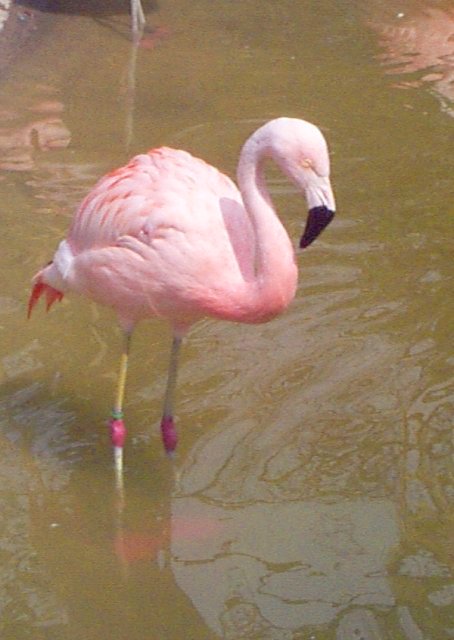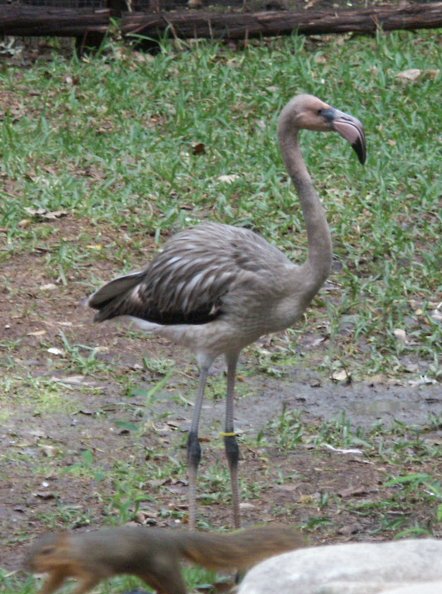 |
 |
| Name:Chilean Flamingo |
| Scientificname: Phoenicopterus chilensis |
 |
| Range:South America, from Peru to southern Argentina and Chile, including partsof Bolivia, Paraguay, and southern Brazil |
| Habitat:Salt marshes(shallow) and brackish coastal lagoons(shallow) in semi-tropicaland tropical areas |
| Status:Special concern |
| Dietin the wild: Filter-feeder; feeds on small crustacean algaeand unicellular organisms |
| Dietin the zoo: soupy mixture of grain, chicken mash, canneddog food, vitamin supplements |
| Location in the zoo:Flamingo Exhibit left of entry bridge. |
| Physicaldescription: Four to five feet tall, and canweigh anywhere from 13-16 lbs. Long, sinuous neck, and long, extremelyslender legs. Bill is bent downward in the middle. Pale pink in color,with darker pink and black wings, dull yellow or yellow-gray legs withdark pink bands at the joints, and pink feet. |
General information: Very gregarious, living in flocksusually numbering in the thousands. Pink coloring comes from a pigmentthat the animal consumes. In captivity, this pigment must be manufacturedinto the flamingo's food, or else the animal would be a dull buff color.Flamingos require shallow water and lots of mud; nests are built by surroundingthe egg with a large pile of mud, which is then incubated for around thirtydays. |
| Personal Observations: The flamingos at the Fort Worth Zoo are beautiful creatures, and although not everyone’s first stop when they visit, these animals can be quite entertaining and fun to watch. During my short observations, there could be heard many squawking contests, several amusing high speed races through the shallow water, two flamingos keeping watch over their nested egg, and several others just relaxing, mind you on one foot, head tucked in their wing, seemingly oblivious to all around them. Watching them perform their filter-feeding process through their beaks was perhaps the most interesting of all. The beak serves as a "strainer" of sorts, filtering mud and water out, while trapping little unicellular creatures in for consumption. |
| PageAuthor: | ChrisSmith |
| GALAXIE5000@hotmail.com | |
 Sources of information: Sources of information: 1. Fort Worth Zoo Placard 2. Interview with "flamingo-keeper" 3.Chileanflamingo chick at Sea World 4. University of MichiganAnimalDiversity Web 6. My own personal observations 7. Chilean Flamingo at the Roger Williams Park Zoo 8. Chilean Flamingo at the Lowry Park Zoo 9. Social Behavior in the Chilean Flamingo
Juvenile Chilean Flamingo |
WhoZooHome |